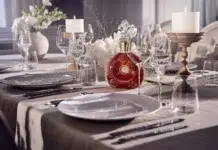Italian whisky is no longer an oxymoron. It is serious business and slowly but surely becoming seriously good stuff.
One of Italy’s best-known grappa makers has become the first Italian whisky maker to be recognized by the prestigious International Spirits Challenge in London.

Poli Segretario di Stato and Conclave whiskies received plaudits at the longest-running and most prestigious global competition dedicated to spirits, now in its 30th edition. They won bronze and silver medals.
“When we approached the world of whisky, eleven years ago, it was a stimulating challenge for us, not only from a production perspective but also from a cultural one. We were entering a fascinating yet completely new universe, with humility and respect”, says Jacopo Poli, owner of Poli Distillerie and two grappa museums.

“Our whiskies, and Italian whiskies in general, though of recent genesis, are able to convey a precise and defined identity, rooted in a centuries-old distilling tradition – that of Grappa distillation – which today finds new ways of telling the story of our territory and our vision of elegance.”
Segretario di Statomade from pure barley malt, pleasantly peated, artisanally distilled using a discontinuous bain-marie pot still and aged for 5 years in oak barrels, with further finishing in Amarone barrels.

The five-year-old Conclave, launched in autumn 2024, is a whisky with a bold and vibrant aroma that evokes the ritual of waiting. It is made from both peated and unpeated pure barley malt, distilled separately with a bain-marie pot still. Then rest in medium-toasted white oak barrels that have been used and regenerated, in order to extract only the softest tannins from the wood. From the Latin “cum clave,” meaning “room locked with a key,” it is inspired by the place where the cardinals of the Catholic Church gather when electing the new Pope, under lock and key, just like the barrels in which Poli Distillerie’s whiskies age for long years.
POLI DISTILLERIE was founded in 1898 in Schiavon, near Venice and Bassano del Grappa (Veneto, Italy), in the heart of the region most renowned for the art of distillation and for the production of Grappa. For four generations, the Poli family has been operating with an ancient alembic entirely made of copper, one of the very few still in existence, to which innovative bain-marie stills (vacuum and traditional) have been added.
“After challenging ourselves with Marconi 46, the first Italian Distilled Gin, we wanted to further expand our production horizons and diversify into whisky, approaching the world of whisky with humility and respect for a centuries-old tradition, in search of our own precise identity“, adds Poli.
“The water comes from a UNESCO Biosphere Reserve. The name SEGRETARIO DI STATO and the plan of St. Peter’s Square shown on the label have been duly authorized by the Secretariat of State of the Holy See.”
There are now twelve whisky distilleries in Italy. Sardinia’s Silvio Carta Winery relies exclusively on barley grown on the island, with winemaker Nino Mason using chestnut barrels that once held his own Vernaccia di Oristano wine. Tuscany’s Winestillery matures all its whiskies in SuperTuscan and Vin Santo barrels sourced from its sister winery, Chioccioli Altadonna, in the heart of the Chianti Classico. In the Dolomites, Villa de Varda offers an expression aged in spruce.

The Ebensperger family founded Italy’s first whisky distillery in 2010 in Glorenza in the Venosta Valley of the Alto Adige on the border with Switzerland and Austria.
“We call it the Italian highlands,” says architect and building contractor Albrecht Ebensperger.
“The whisky is produced underground using traditional Scottish Rothes stills. We use overheated water instead of steam in our distillation process. This makes it possible to control the temperatures very precisely.”
The Puni distillery is a 13m high cube designed by Werber Tischolo in tribute to local barn windows. The distinctive bottles are designed by Christian Zanzotti. Puni is the Rhaetian word for the local river.
The region’s warm summers and cold winters accelerate the aging of whisky. Puni grows its own, ancient variety of rye and mix it with malted barley and grain to produce “Nova”, three years old, matured in American and European oak casks, “Alba”, three years old, matured in Marsala casks and finished in Islay casks, “Sole”, four years old, matured for two years in ex-Bourbon casks and for two more in Pedro Ximénez Sherry butts and the limited edition, “Nero” 4YO matured in Blauburgunder wine casks. “Vina Puni” is aged for five years in Marsala Vergine casks.
Italy is certainly not all wine and Campari. Italy became the third-biggest importer of Scotch in the mid-1970s, and number one for malts. Whisky was first imported by Genoese firms like Wax & Vitale, who appointed Johnnie Walker’s agent as long ago as 1906. Glenmorangie may have been an earlier presence. Italians were definitely exporting their own ‘Whisky Italiano’ and ‘Whisky Medicinal’ to the US during Prohibition.
Whisky was reintroduced to Italy by Allied troops and popularized by Edoardo Giaccone’s whisky shop in Salò, Lake Garda, which opened in 1959. By 1979, imports of Scotch – a symbol of la Dolce Vita – had reached 40m.
The bottler Silvano Samarolo worked with Cadenhead and Gordon & MacPhail. In Rimini. High Spirits are brought out in beautifully labelled single cask bottlings. Whisky was collected as much as it was drunk. Giuseppe Begnoni bought the world’s biggest whisky collection, owned by Edoardo Giaccone, who died in 1996.
In the middle Alps and South Tyrol, Tramin/Termeno, which gave the Gewurztraminer grape its name, produces another first single malt made in Italy. Using Bavarian malted barley, the Psenner distillery, founded in the 1920s, distils “eRètico”, which in Italian means a person who makes a choice.
The whiskies are aged in ex-grappa French oak casks bought in Armagnac. Then they move to ex-oloroso Sherry casks for a few months, before returning again to ex-grappa.
Italy still drinks more Scotch per head than the US. Milan hosts an annual Whisky Festival. And has done for over twenty years.
Says Luca Chichizola, former “Whisky Maniac” and Italian, and now brand ambassador of Rossi & Rossi’s Treviso-based Scottish whisky bottler, Wilson and Morgan: “Whisky is still a niche passion. It’s easy to appreciate good spirits if you have a strong wine culture.
“The generic love and fascination of the Italian upper-middle class towards the refinement and luxury of very traditional products from the UK was another motivating factor.”
Rossi & Rossi was the Italian importer for the official bottlings of several distilleries in the ’70s and ’80s. Such as Bowmore. Mario Rossi discovered whisky after befriending English soldiers who were fighting to free Italy. W&M, now run by son Fabio, buys from several different sources, keeping its stock in Scotland in different bonded warehouses.






